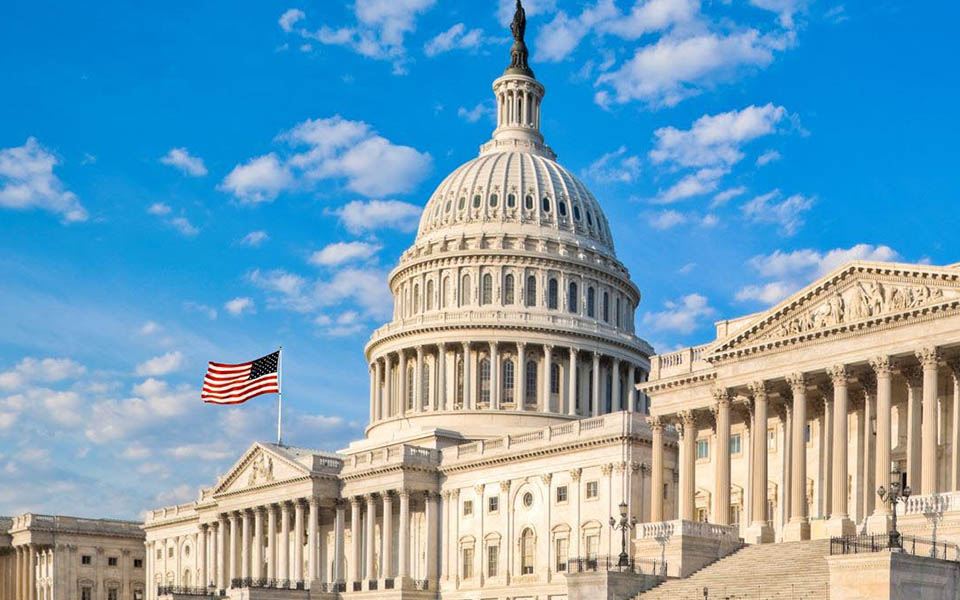2023 is no stranger to health plan litigation. Just some of the notable cases are as follows:
Litigation Related to Manufacturer Assistance
In HIV and Hepatitis Policy Institute, et al. v. United States Department of Health and Human Services, et al., Civil Action No. 22-2604, a U.S. District Court for the District of Columbia has remanded the 2021 regulations related to manufacturer assistance back to HHS for additional consideration. In a nutshell the 2021 regulations allow a plan to decide whether to count manufacturer assistance such as coupons and the like, toward satisfaction of the plan’s deductible. The challengers to the regulations want such assistance to count toward the insured’s financial obligation.
This could raise potential issues for HSA compatible high-deductible health coverage. As a reminder, an individual must pay all expenses, with limited exceptions for preventive services, until the minimum statutory deductible is satisfied. HHS has filed a motion to clarify and a motion to appeal.
This litigation is ongoing and can be tracked here. As more information becomes available, we will share it.
Preventive Services Challenged
You may recall certain Affordable Care Act (ACA) Preventive Services must be covered without cost to the patient. The preventive services were challenged and U.S. District Judge Reed O’Connor rendered his decision in Braidwood Management Inc. v. Becerra, finding that health plans no longer need to cover certain ACA Preventive Services. Judge O’Connor’s decision was appealed, and his ruling has been stayed pending any ruling by the appeals court. In the meantime, plans should continue to cover preventive services.
NO SURPRISES ACT
In the continuing saga between health care providers and the Department of Health and Human Services, the Department of Labor, and the Treasury, a federal court in Texas has once again vacated additional portions of the regulations that implement the surprise billing independent dispute resolution (IDR) process. For more information and to track the status see here.
As a reminder the No Surprises Act (NSA) replaces the emergency provisions of the Affordable Care Act (ACA) and prohibits balanced billing in three instances (1) emergency services, (2) out-of-network services received in-network, and (3) emergent air ambulance services.
Other Compliance Issues
Year-End Reminders
Preventive Health Services
A preventive service must be covered by the plan (in-network services) at no cost. When a new preventive mandate is approved a plan must begin covering it by the first date of the plan year beginning one year after the date of approval. A complete list of ACA-required preventive services can be accessed from the Healthcare.gov website.
The preventive service mandate has been challenged and litigation is ongoing, see above.
Employer Shared Responsibility Provisions
Applicability. For purposes of the ACA’s employer shared responsibility requirement as well as the reporting and disclosure requirements, applicable large employer (ALE) status is determined each calendar year, based on the average size of the employer’s workforce during the prior year. Thus, if you averaged at least 50 full-time employees, including full-time equivalent employees during 2023, you are most likely an ALE for 2024, and are subject to the reporting requirements due in early 2025.
Affordability Standard. For purposes of determining affordability, coverage under an employer-sponsored plan is deemed affordable if the employee’s required contribution to the plan does not exceed 9.12% of the employee’s household income for the taxable year, based on the cost of single coverage in the employer’s least expensive plan. For 2024 the affordability goes down to 8.39%.
Increase in Excise Tax Penalties. The chart below reflects the annual penalties, for purposes of calculating the ‘no coverage’ excise tax pursuant to Code Section 4980H(a), and the ‘inadequate or unaffordable’ excise tax pursuant to Code Section 4980H(b) for 2022 to 2024. These are the excise taxes that could apply if an applicable large employer is found not to have offered health coverage to a full-time employee. These amounts are based on the HHS inflationary percentage contained in its annual benefit and payment parameter standards for the relevant year, and as officially released by the Internal Revenue Service. Annualized penalties are assessed on a monthly basis.
| ‘No Coverage’ Excise Tax IRC 4908H(a) | ‘Inadequate or Unaffordable’ Excise Tax IRC 4908H(b) | ||
| 2020 | $2,570 | 2020 | $3,860 |
| 2021 | $2,700 | 2021 | $4,060 |
| 2022 | $2,750 | 2022 | $4,120 |
| 2023 | $2,880 | 2023 | $4,320 |
| 2024 | $2,970 | 2024 | $4,460 |
Small Business Tax Credit (SBTC)
Small businesses and tax-exempt employers who provide health care coverage to their employees under a qualified health care arrangement are entitled to a tax credit, known as the small business tax credit (SBTC). To be eligible for the SBTC, the employer must employ fewer than 25 full-time equivalent employees, whose average annual wages are less than $66,650 (indexed for 2024; the wage ceiling in 2023 is $61,400).
The tax credit phases out for eligible small employers when the number of its full-time employees (FTEs) exceeds 10; or, when the average annual wage for the FTEs exceeds $32,400 in the 2024 tax year (the phase-out wage limit in 2023 is $30,700). As a reminder, only qualified health plan coverage purchased through a SHOP marketplace is available for the tax credit, and only for a 2-consecutive year period.
For purposes of calculating the SBTC, the Form 8941 is filed annually on the employer’s tax return as a general business credit; tax exempt entities would file the Form 8941 with its Form 990-T.
Additional ACA-related Fees
Patient-Centered Outcomes Research Institute (PCORI) Fees
The PCORI fee is assessed on the average number of lives covered under the policy or plan. The fee will continue to be assessed through 2029.
For policy and plan years ending between October 1, 2022, and October 1, 2023, the fee is $3.00 per covered life. The fee increases to $3.22 per covered life for policy and plan years ending between October 1, 2023 and before October 1, 2024 (applicable for a 2023 calendar year plan. Affected entities are required to pay the fees and file the Form 720 by July 31st of each year.
ACA Cost Share Restrictions
The chart below reflects the 2024 and 2023 inflationary adjustments applicable to out-of-pocket (OOP) limits including deductibles, co-insurance and co-payments in ACA plans. These cost-share restrictions apply to insured plans offered via the marketplace and insured and self-funded plans offered outside marketplace. These amounts differ from the OOP limits applicable to high deductible health plans used in conjunction with a health savings account (HSA).
As a reminder, individuals aged 55 or older may make an additional $1,000 “catch-up” contribution to their HSAs.
Notably, for 2025 the ACA out-of-pocket limits will decrease and will be $9,200 for self-only and $18,400 for family. This is the first time the out-of-pocket limits have decreased.
| 2024 | 2023 | |||
|
ACA Plans Out-of-Pocket (OOP Limits) |
Self-Only | Family | Self-Only | Family |
| $9,450 | $18,900 | $9,100 | $18,200 | |
| Health Savings Accounts | Individual | Family | Individual | Family |
| HDHP Annual Deductible | $1,600 | $3,200 | $1,500 | $3,000 |
| HDHP Annual Out-of-Pocket Limit | $8,050 | $16,100 | $7,500 | $15,000 |
| Contribution Limit | $4,150 | $8,300 | $3,850 | $7,750 |
Updates: State-Required Individual Mandate Reporting
The states of California, District of Columbia, Massachusetts, New Jersey, Rhode Island, and Vermont have enacted individual mandate laws that require residents to be covered by minimum essential coverage (MEC) or pay a state tax. Further, certain states require entities who provide MEC to file information returns to the relevant state revenue departments.
Most of these states accept the Form 1094 and 1095 series used for federal MEC filing purposes. Recently, several state revenue departments have issued updates relating to these reporting obligations, as reflect in the charts below.
Notable, unlike many other employment laws, these state individual mandates are not based on place of employment; rather, the applicability of the state individual mandate laws is based on state of residence.
| Individual State Mandate Reporting | ||||
State |
Covered entities |
Applicable form(s) |
Report due |
Resources |
| California |
Self-funded plan sponsors, health insurer Employers required to report the information if insurer does not |
Same forms used for federal purposes (Form 1094/1095) |
File annually by March 31 electronically Provide written statement annually by January 31 to individuals |
California Franchise Tax Board |
| District of Columbia |
Self-insured health plans, fully insured health plans covering min. 50 full-time employees, health insurer Third party service providers may file forms for applicable entities |
Same forms used for federal purposes (Form 1094/1095) |
File 30 days after IRS deadline for submitting 1095-B/C forms, including any extensions, electronically Form 1095-B/C satisfies DC obligation; no further benefit statement to individuals required |
District of Columbia Office of Tax and Revenue |
| Massachusetts |
Employers, health insurers and other entities that provide health coverage Employers may contract with TPA to fulfill this obligation Employers with six or more employees |
Form MA 1099-HC | Provide annually by January 31 to primary subscriber, and file with Department of Revenue |
Massachusetts Department of Revenue |
| Employers with six or more employees | Health Insurance Responsibility Disclosure (HIRD) form | Annual HIRD filing period begins Nov. 15 and ends Dec. 15 |
Massachusetts Department of Revenue |
|
| New Jersey |
Employers, health insurers and other entities that provide health coverage Employers must submit the forms if the insurer does not |
Forms 1095-B/C Form NJ-1095 |
Transmit report to Division of Tax by April 2, 2024 electronically Provide Form 1095-B to each primary enrollee by March 1, 2024 |
New Jersey Division of Taxation |
| Rhode Island |
Employer/plan sponsors, licensed insurer Employers may contract with a third party for reporting and disclosure obligations |
Forms 1094/1095 |
File report annually by March 31, electronically Provide written statement annually by March 2 to individuals |
Rhode Island Division of Taxation |
| Vermont | Vermont residents must maintain a minimum level of health coverage. The law requires residents to self-report compliance when filing his/her taxes. There is no penalty for failure to have health coverage. | |||
Highlights of ACA-Related Reporting and Disclosure Reminders
The two tables below reflect certain reporting and disclosure requirements.
ACA-required Reporting Reminders
| Form | To Whom | Due Date | |
Form W-2* |
|||
|
ACA-required reporting includes: Aggregate cost of health coverage (Box 12, using Code DD). Note: employers filing <250 Form W-2s per year remain exempt from reporting the aggregate cost of health coverage on the Form W-2 until future IRS guidance is issued. Total amount of permitted benefits received under a qualified small employer health reimbursement arrangement (QSEHRA) (Box 12 – Code FF) Additional Medicare tax withholding on earnings exceeding $200,000 per calendar year (Box 6) |
Internal Revenue Service (IRS) http://www.irs.gov/ |
January 31, 2024 | |
Form 1094/1095* |
|||
| File Form 1094C File Form 1095C Instructions for 1094/95C File Form 1094B Instructions for 1094/95B |
IRS | Paper: Feb. 28, 2024 E-file: April 1, 2024 |
|
| Furnish Form 1095; or certain Form 1095-B reporting entities can utilize simplified posting method | Individuals listed in Forms 1094 and 1095 | March 1, 2024 Note: good faith standard will no longer apply |
|
Form 720 |
|||
| Used for purposes of Patient Centered Outcome Research Institute (PCORI) fee | IRS | July 31 of each year | |
Gag Clause Attestation |
CMS’ Health Insurance Oversight System (HIOS) | December 31 of each year | |
RxDC Reporting |
RxDC Module in HIOS | June 1 of each year |
*Beginning in 2024, employers issuing 10 or more forms in aggregate must e-file their information returns.
Additional ACA-Related Disclosure Reminders
Note: Below are select ACA-required disclosures. For a more descriptive list of notice obligations relating to the ACA and other welfare benefit plans, ask your CBIZ representative for a Chart of Notice Obligations.
| Form | To Whom | Due Date | |
|
Summary of Benefits and Coverage (SBC) SBC template and related materials available from DOL-EBSA and/or HHS-CCIIO Note the requirement to provide in a culturally and linguistically appropriate manner. For additional information please see County Data for Culturally and Linguistically Appropriate Services (CLAS County Data) (dol.gov) |
All plan participants |
From Plan Sponsor to Plan Participants: Upon application |
|
|
Advanced 60-day Notice of Material Change in Benefits |
All plan participants | No later than 60 days prior to any material change in any terms of plan affecting Summary of Benefits and Coverage (SBC) content not reflected in the most recently provided SBC (other than in connection with renewal or reissuance of coverage) | |
|
Notice of Marketplace Options Model notice for use by employers who offer coverage to some or all employees: Model notice for employers who do not offer health coverage: |
All new hires, including full-time and part-time employees, without regard to eligibility status for the health plan | Within 14 days of date of hire |
Increased Penalties for Certain Compliance Violations
Federal government agencies who enforce the ACA, including the Departments of Labor, Treasury and Health and Human Services, have authority to adjust civil penalties attributable to compliance failures.
| Failure to provide Summary of Benefits and Coverage (SBV) | Currently up to $1,362 per failure |
| Failure to file a correct information return Example: Form 1094/1095 and W-2 |
Avg annual receipts/3 years ≥$5M:$310 per return (cap of$3,783,00 per calendar year) Avg. annual receipts/3years≤$5M: $310 per return (cap of $1,261,00 per calendar year (for filing in 2024) |
| Failure to provide correct payee statement Example: Forms 1094/1095 and W-2 |
Avg annual receipts/3 years ≥$5M:$310 per return (cap of$3,783,00 per calendar year) Avg. annual receipts/3years≤$5M: $310 per return (cap of $1,261,00 per calendar year (for filing in 2024) |
About the Author: Karen R. McLeese is Vice President of Employee Benefit Regulatory Affairs for CBIZ Benefits & Insurance Services, Inc., a division of CBIZ, Inc. She serves as in-house counsel, with particular emphasis on monitoring and interpreting state and federal employee benefits law. Ms. McLeese is based in the CBIZ Kansas City office.
The information contained herein is not intended to be legal, accounting, or other professional advice, nor are these comments directed to specific situations. The information contained herein is provided as general guidance and may be affected by changes in law or regulation. The information contained herein is not intended to replace or substitute for accounting or other professional advice. Attorneys or tax advisors must be consulted for assistance in specific situations. This information is provided as-is, with no warranties of any kind. CBIZ shall not be liable for any damages whatsoever in connection with its use and assumes no obligation to inform the reader of any changes in laws or other factors that could affect the information contained herein.
© Copyright CBIZ, Inc. All rights reserved. Use of the material contained herein without the express written consent of the firms is prohibited by law. This publication is distributed with the understanding that CBIZ is not rendering legal, accounting or other professional advice. The reader is advised to contact a tax professional prior to taking any action based upon this information. CBIZ assumes no liability whatsoever in connection with the use of this information and assumes no obligation to inform the reader of any changes in tax laws or other factors that could affect the information contained herein. Material contained in this publication is informational and promotional in nature and not intended to be specific financial, tax or consulting advice. Readers are advised to seek professional consultation regarding circumstances affecting their organization.
“CBIZ” is the brand name under which CBIZ CPAs P.C. and CBIZ, Inc. and its subsidiaries, including CBIZ Advisors, LLC, provide professional services. CBIZ CPAs P.C. and CBIZ, Inc. (and its subsidiaries) practice as an alternative practice structure in accordance with the AICPA Code of Professional Conduct and applicable law, regulations, and professional standards. CBIZ CPAs P.C. is a licensed independent CPA firm that provides attest services to its clients. CBIZ, Inc. and its subsidiary entities provide tax, advisory, and consulting services to their clients. CBIZ, Inc. and its subsidiary entities are not licensed CPA firms and, therefore, cannot provide attest services.















